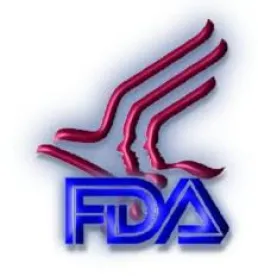The first major overhaul of the Nutrition Facts panel in more than 20 years focuses on serving sizes, calories, and a refreshed design.
The Food and Drug Administration (FDA or the Agency) on February 27 announced[1] the forthcoming publication of two proposed rules designed to overhaul Nutrition Facts labeling: “Revision of the Nutrition and Supplement Facts Labels”[2] and “Serving Sizes of Foods That Can Reasonably Be Consumed at One-Eating Occasion; Dual Column Labling; Updating, Modifying, and Establishing Certain Reference Amounts Customarily Consumed; Serving Size for Breath Mints; and Technical Amendments.”[3] The proposals were published in the Federal Register on March 3, 2014.
Background
The Nutrition Facts label was first introduced more than 20 years ago through the implementation of the Nutrition and Education Labeling Act (NLEA) and, according to FDA, is in need of a complete makeover. FDA lists three main categories of changes in the rules: those based upon new understanding of nutrition science, those reflecting updated serving size requirements and package-specific requirements, and those implementing a refreshed design.[4] Through these changes, FDA aims to change food packaging to reflect advances in public health initiatives, including those on obesity, chronic diseases, and scientific information, which is reflected by the removal and addition of certain vitamins and minerals from the Nutrition Facts label.[5] FDA states that the goal of the revamping of the Nutrition Facts label is not to tell people what to eat, but rather to provide better information to consumers so they can make informed choices.[6] Further, FDA states that the benefits of this change outweigh the costs, estimating that the one-time labeling change will cost industry approximately $2.3 billion, while the cumulative benefits over 20 years will average between $21.1 to $31.4 billion.[7]
What Is Being Removed from the Label?
In total, under the proposed rule, Vitamins A and C, “Calories from Fat,” and the footnote table that lists reference values for both 2,000- and 2,500-calorie diets would be removed from the Nutrition Facts panel.
Vitamins A and C would no longer be required to be listed on the Nutrition Facts panel. FDA states that data shows that Vitamin A and C deficiencies are uncommon.[8] The Agency reached this conclusion after examining data from the National Health and Nutrition Examination Survey (NHANES).[9] Rather than requiring Vitamins A and C to be displayed on the Nutrition Facts panel, FDA will permit manufacturers to list them if they so choose.
FDA is also proposing to remove the listing of “Calories from Fat.” In the proposed rule, FDA states that “current science supports a view that the type of fat is more relevant than the overall total fat intake in increased risk of chronic diseases.”[10] Further, the Agency states that removal of “Calories from Fat” will not have an effect on consumers’ ability to determine a food’s “healthfulness.”
The requirement for the footnote table that lists the reference values for certain nutrients for 2,000- and 2,500-calorie diets will also be removed. FDA will perform consumer research to determine whether this change will affect consumers’ understanding of the Nutrition Facts label.[11]
What Is Being Added to the Label?
Listings of “Added Sugars,” potassium, and Vitamin D would be new requirements under the proposed rule.
“Total Carbs” would replace “Total Carbohydrates” to reflect the term commonly used and understood by consumers. “Sugars” would be listed under “Total Carbs,” and a new category, “Added Sugars,” would appear indented under the “Sugars” listing. FDA states that, on average, American consumers eat 16% of their daily calories from sugars that are added during food production.[12] Thus, the new listing of “Added Sugars” aims to raise consumer awareness about the extra sugars that appear in foods.
Two more additions to the Nutrition Facts panel would be potassium and Vitamin D. FDA states that Vitamin D is important for healthy bones, especially for women and the elderly.[13] Potassium can lower blood pressure and prevent hypertension. FDA analyzed data from NHANES and determined that the average consumer was not consuming enough of these nutrients to protect against chronic diseases, and thus Potassium and Vitamin D would be added to the Nutrition Facts.[14]
Other Changes
Under the proposed rule, the calorie count would be the most prominent feature of the label, allowing the reader to quickly and easily identify the calories per serving. The prominence of the serving size per container would also increase, as it would be the first information presented on the Nutrition Facts label. Further, to make the serving-size information more accessible to the average consumer, it would be listed in household measures such as “2/3 cup.”
Finally, and significantly, the serving sizes would be changed to more accurately reflect what consumers customarily consume. FDA set the current reference values (Reference Amounts Customarily Consumed, or RACCs) based on eating habits analyzed in studies conducted in 1977–1978 and 1987–1988.[15] Because people generally consume more now than they did when these studies were conducted, the RACCs would be updated to reflect this change. Serving sizes are based on RACCs, and thus manufacturers would need to adjust serving sizes. FDA proposed that some food products that were labeled as more than one serving be labeled as one serving because consumers typically eat or drink them in one sitting. FDA lists examples of these products, including a 24-ounce can of soda, a 10.5-ounce frozen entrée, a 19-ounce can of soup, and a pint of ice cream.[16]
FDA also proposed an alternative visual format for the Nutrition Facts panel. The alternative format utilizes three headings to organize nutrient levels and help consumers access information. First, “Quick Facts” lists the amount of total carbs, fat, and protein. Second, “Avoid Too Much” points out nutrients, such as fat, cholesterol, sodium, and sugar, that should be consumed in moderation. Third, “Get Enough” lists fiber and various vitamins. FDA is requesting comments on how these alternative headings may improve consumers’ understanding of the nutritional value of a product.[17] While the proposal does not address Front-of-Pack labeling, the alternate format of the proposed Nutrition Facts panel may provide some hint of future directions with its use of “Avoid Too Much” and “Get Enough” language. FDA’s Front-of-Package Labeling Initiative has not seen significant movement since its announcement in 2009 by Dr. Hamburg.
If finalized, the proposed rules would be applicable to all nonexempt food products that fall within FDA’s jurisdiction. Meat, poultry, and processed egg products regulated by the U.S. Department of Agriculture (USDA) Food Safety and Inspection Service are not covered, but USDA has informally stated that it is contemplating similar action.
The proposed rules will be open for public comment for 90 days. Any final rules will become effective 60 days after the date of publication. Manufacturers will have two years to be in compliance after the final effective date.
[1]. FDA, Proposed Changes to the Nutrition Facts Label (Feb. 27, 2014),view here [hereinafter Proposed Changes].
[2]. 79 Fed. Reg. 11,880 (Mar. 3, 2014) (to be codified at 21 C.F.R. pt. 101), available here.
[3]. 79 Fed. Reg. 11,990 (Mar. 3, 2014) (to be codified at 21 C.F.R. pt. 101), available here.
[4]. Proposed Changes, supra note 1.
[5]. FDA, Factsheet on the New Proposed Nutrition Facts Label (Feb. 27, 2014), view here [hereinafter Factsheet].
[6]. FDA, Nutrition Facts Label: Proposed Changes Aim to Better Inform Food Choices (Feb. 27, 2014), view here [hereinafter Proposed Changes Goals].
[7]. Factsheet, supra note 5.
[8]. Id.
[9]. 79 Fed. Reg. 11,881.
[10]. Id.
[11]. Id. at 11,882.
[12]. Proposed Changes Goals, supra note 6.
[13]. Id.
[14]. Factsheet, supra note 5.
[15]. Id.
[16]. Id.
[17]. 79 Fed. Reg. 11990, 11954–55.



 />i
/>i
